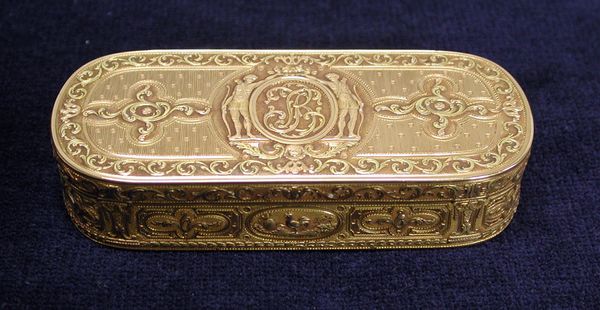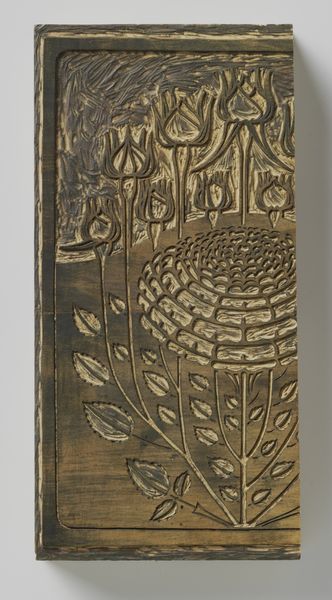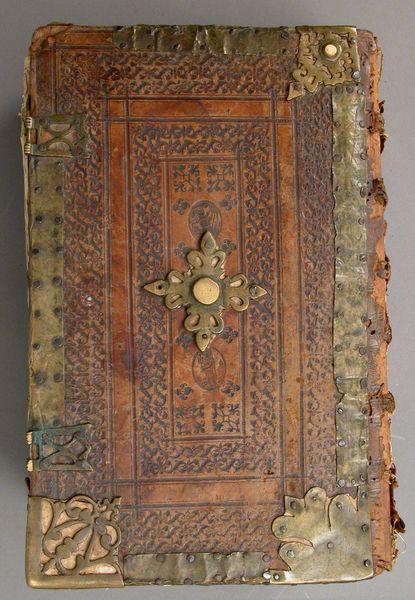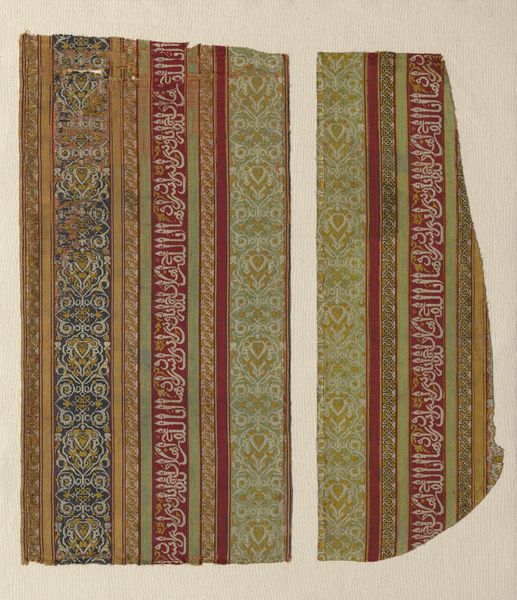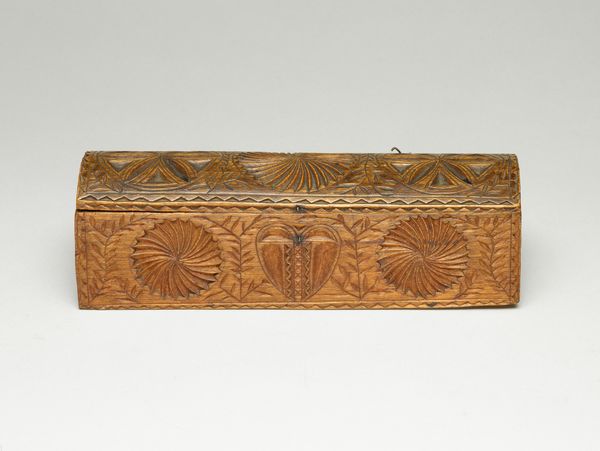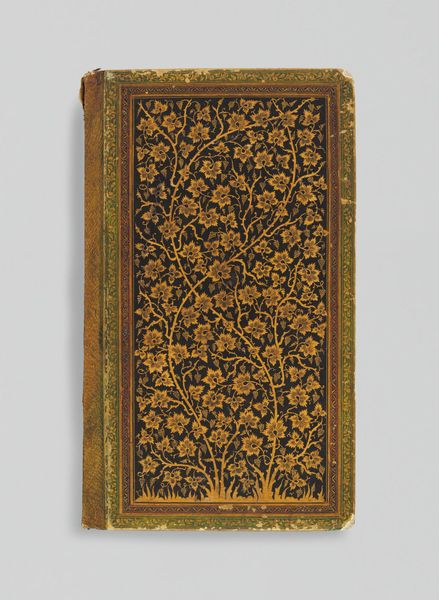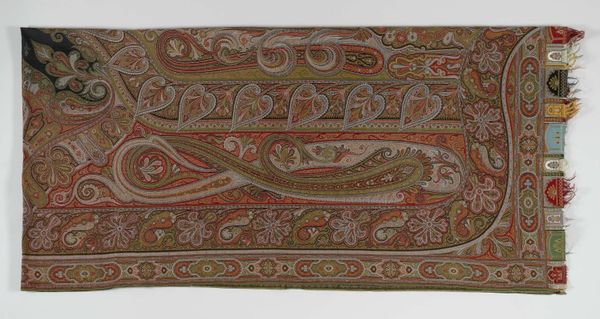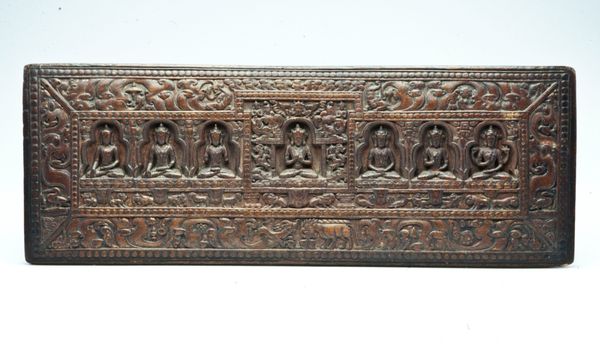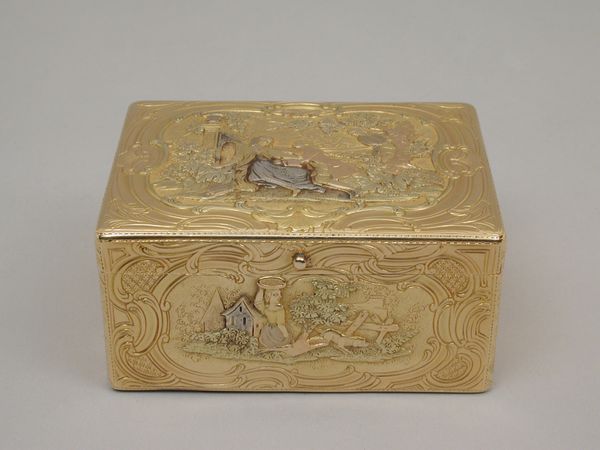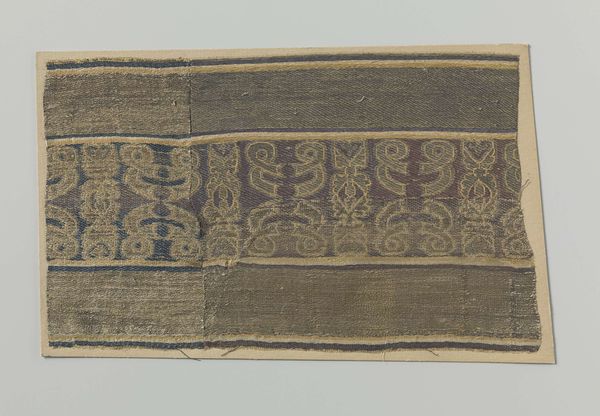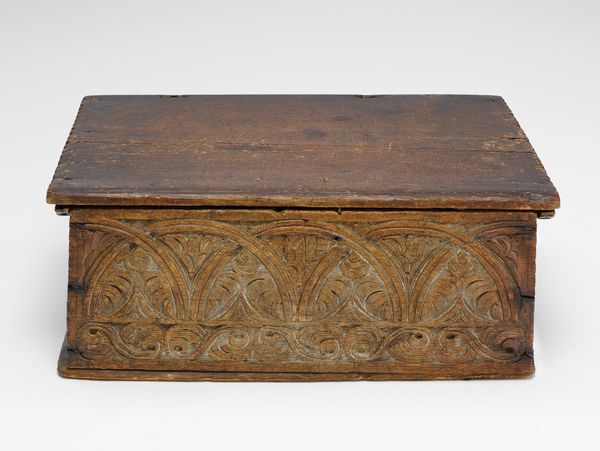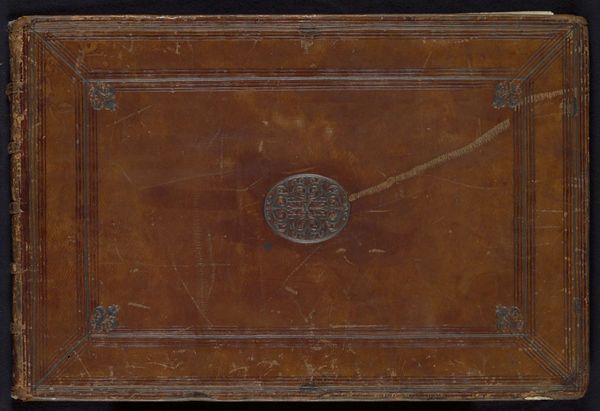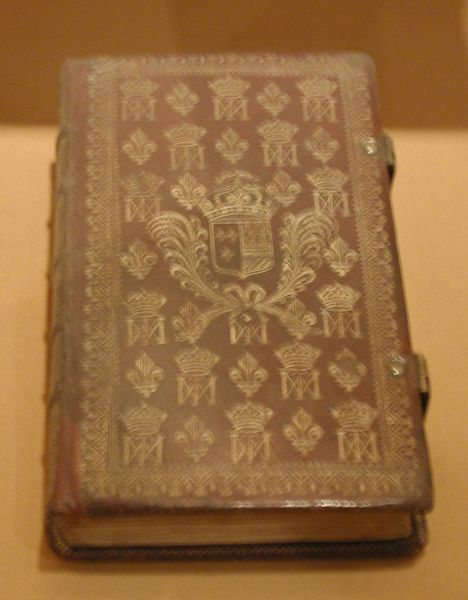
carving, metal
#
carving
#
metal
#
sculpture
#
ceramic
#
islamic-art
#
decorative-art
Dimensions: Box: L. 13 1/2 in. (34.3 cm) H. 3 1/4 in. (8.3 cm) D. 4 in. (10.2 cm) Spoon: L. 4 1/2in. (11.4cm) H. 3/8 in. (1 cm) D. 9/16 in (1.4 cm) Wt. 0.14 oz. (4 g)
Copyright: Public Domain
Editor: Here we have the "Pen Box (Qalamdan) with Inscriptions," crafted sometime between 1500 and 1525. Made from carved metal, it's currently housed at the Metropolitan Museum of Art. I am fascinated by its detailed carving; how would you approach its intricate design? Curator: The rigorous application of formal principles is primary here. Consider the way the artist has unified the surface through the repetition of line and shape. Note the symmetry, but also the subtle variations within that symmetry that create visual interest. The horizontal format emphasizes linearity; how does the inscription function within this framework? Editor: The inscription runs along the top and bottom, framing the central designs, creating order. It feels almost architectural in its structure, like a frieze. But why did the artist choose to integrate the script this way? Curator: The script’s placement certainly enhances the design’s architecture, reinforcing the overall structure. Its rhythm counterpoints the fluid interlace pattern. Observe how the geometric exactness of the box shape itself contributes to a visual language that privileges precision and order above all else. Is it possible to separate form from content? Editor: So, by considering these elements, like the precise lines and careful distribution of script, we are able to analyze it independent of religious implications. Curator: Precisely. We can assess the internal relationships within the work and the systems of signs that operate visually. What have you learned by focusing solely on these formal qualities? Editor: I see the Pen Box as an intersection of control and flow, and I now appreciate how that tension fuels its beauty and artistic meaning, regardless of its cultural origin. Curator: Indeed. The interplay between these forces demonstrates the strength of a visual language that surpasses its historical context.
Comments
No comments
Be the first to comment and join the conversation on the ultimate creative platform.
